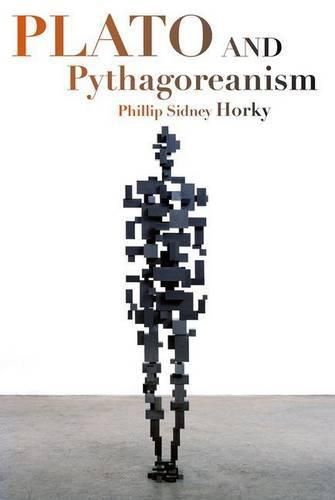Readings Newsletter
Become a Readings Member to make your shopping experience even easier.
Sign in or sign up for free!
You’re not far away from qualifying for FREE standard shipping within Australia
You’ve qualified for FREE standard shipping within Australia
The cart is loading…






Was Plato a Pythagorean? Plato’s students and earliest critics thought so, but scholars since the nineteenth century have been more skeptical. With this probing study, Phillip Sidney Horky argues that a specific type of Pythagorean philosophy, called mathematical Pythagoreanism, exercised a decisive influence on fundamental aspects of Plato’s philosophy. The progenitor of mathematical Pythagoreanism was the infamous Pythagorean heretic and political revolutionary Hippasus of Metapontum, a student of Pythagoras who is credited with experiments in harmonics that led to innovations in mathematics. The innovations of Hippasus and other mathematical Pythagoreans, including Empedocles of Agrigentum, Epicharmus of Syracuse, Philolaus of Croton, and Archytas of Tarentum, presented philosophers like Plato with novel ways to reconcile empirical knowledge with abstract mathematical theories. Plato and Pythagoreanism demonstrates how mathematical Pythagoreanism established many of the fundamental philosophical questions Plato dealt with in his central dialogues, including Cratylus, Phaedo, Republic, Timaeus, and Philebus. In the process, it also illuminates the historical significance of the mathematical Pythagoreans, a group whose influence on the development of philosophical and scientific methods has been obscured since late antiquity. The picture that results is one in which Plato inherits mathematical Pythagorean method only to transform it into a powerful philosophical argument about the essential relationships between the cosmos and the human being.
$9.00 standard shipping within Australia
FREE standard shipping within Australia for orders over $100.00
Express & International shipping calculated at checkout
Was Plato a Pythagorean? Plato’s students and earliest critics thought so, but scholars since the nineteenth century have been more skeptical. With this probing study, Phillip Sidney Horky argues that a specific type of Pythagorean philosophy, called mathematical Pythagoreanism, exercised a decisive influence on fundamental aspects of Plato’s philosophy. The progenitor of mathematical Pythagoreanism was the infamous Pythagorean heretic and political revolutionary Hippasus of Metapontum, a student of Pythagoras who is credited with experiments in harmonics that led to innovations in mathematics. The innovations of Hippasus and other mathematical Pythagoreans, including Empedocles of Agrigentum, Epicharmus of Syracuse, Philolaus of Croton, and Archytas of Tarentum, presented philosophers like Plato with novel ways to reconcile empirical knowledge with abstract mathematical theories. Plato and Pythagoreanism demonstrates how mathematical Pythagoreanism established many of the fundamental philosophical questions Plato dealt with in his central dialogues, including Cratylus, Phaedo, Republic, Timaeus, and Philebus. In the process, it also illuminates the historical significance of the mathematical Pythagoreans, a group whose influence on the development of philosophical and scientific methods has been obscured since late antiquity. The picture that results is one in which Plato inherits mathematical Pythagorean method only to transform it into a powerful philosophical argument about the essential relationships between the cosmos and the human being.